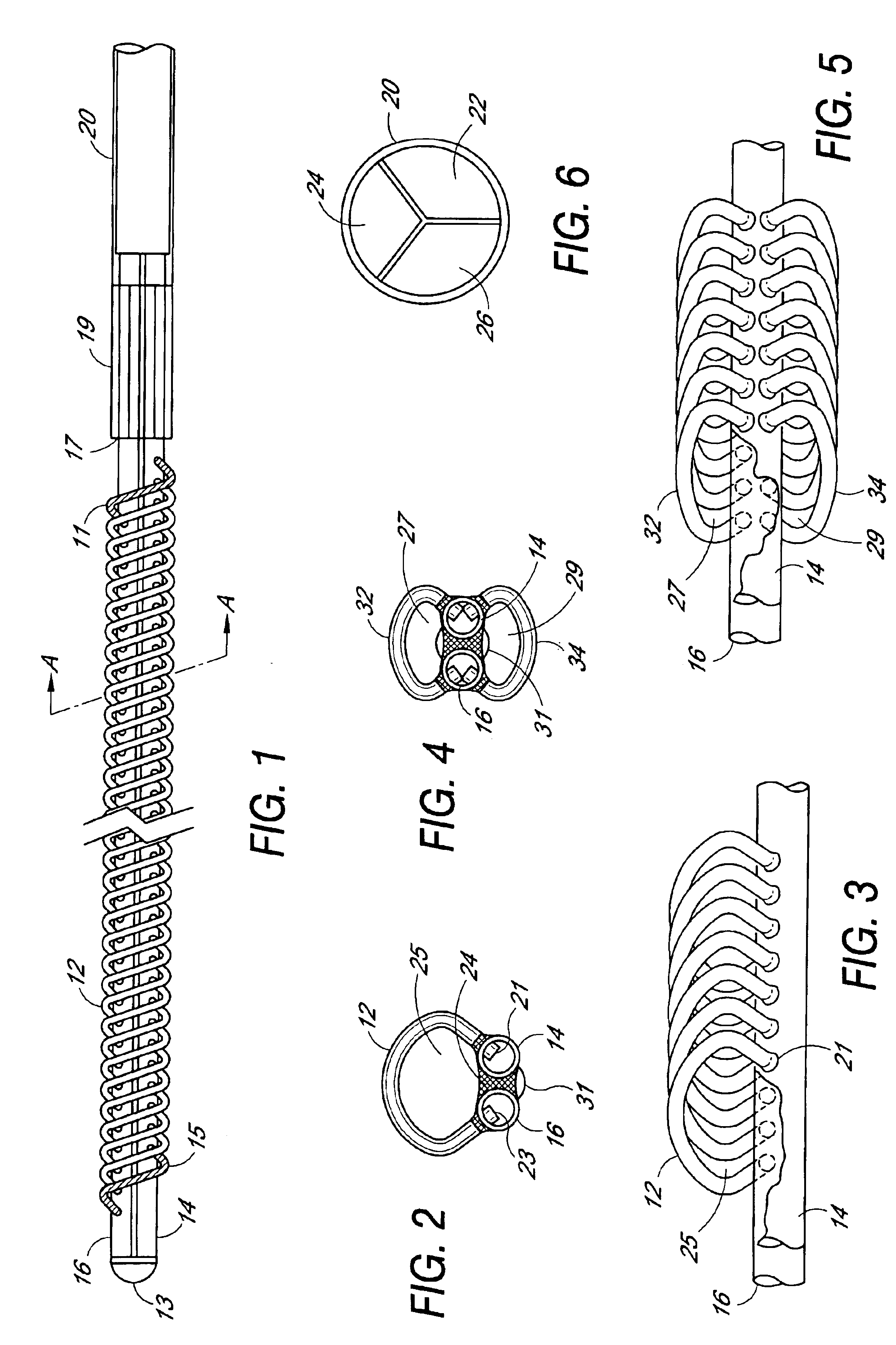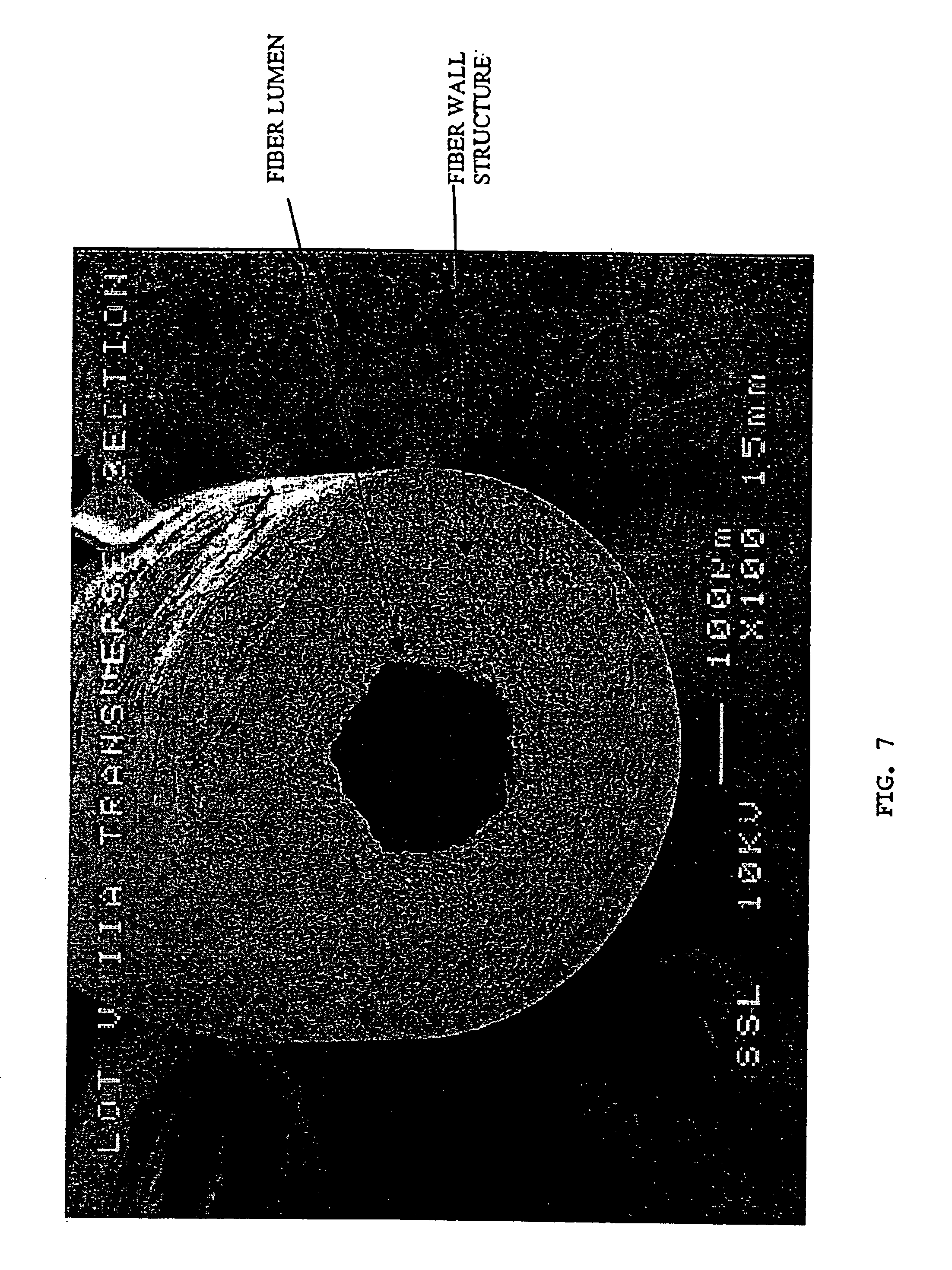Plasmapheresis filter device and catheter assembly
a filter device and plasmapheresis technology, applied in the field of plasmapheresis filter devices and catheter assemblies, can solve the problems of inability to perform in-vivo, clogging, and inability to achieve in-vivo satisfactory in-vivo performance of conventional dialysate hollow fiber membrane filters, and achieves the effect of higher mass density and low mass density
- Summary
- Abstract
- Description
- Claims
- Application Information
AI Technical Summary
Problems solved by technology
Method used
Image
Examples
Embodiment Construction
[0010]In the preferred embodiment illustrated in FIGS. 1-3, a pair of elongated hollow tubes are joined side-by-side lengthwise to form the core of the filter device. The two elongated hollow core tubes 14 and 16 terminate at a distal end with a distal end plug or cap 13 formed of a material that seals the open tube ends. The tubes and end cap may be made of any suitable biocompatible material, for example, medical grade extruded urethane tubes. Other biocompatible materials include synthetic rubbers, polycarbonate, polyethylene, polypropylene, nylon, etc. The elongated hollow tubes may be secured together using suitable bonding material 24, adhesive compositions, etc., for example, a UV curable adhesive applied along the length between the two tubes. The length and diameter of the filter device may be selected to accommodate the vessel or vein in which it is to be implanted. Accordingly, the diameter and length of the one or more elongated hollow tubes forming the central core of t...
PUM
| Property | Measurement | Unit |
|---|---|---|
| length | aaaaa | aaaaa |
| length | aaaaa | aaaaa |
| length | aaaaa | aaaaa |
Abstract
Description
Claims
Application Information
 Login to View More
Login to View More - R&D
- Intellectual Property
- Life Sciences
- Materials
- Tech Scout
- Unparalleled Data Quality
- Higher Quality Content
- 60% Fewer Hallucinations
Browse by: Latest US Patents, China's latest patents, Technical Efficacy Thesaurus, Application Domain, Technology Topic, Popular Technical Reports.
© 2025 PatSnap. All rights reserved.Legal|Privacy policy|Modern Slavery Act Transparency Statement|Sitemap|About US| Contact US: help@patsnap.com



